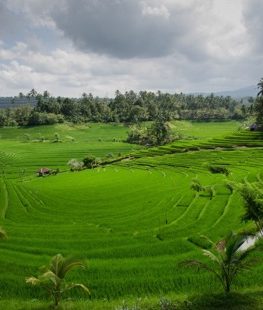Published on May 13, 2013
Nearly every capital city in the world has a long and fascinating history. The best of them retain portions of their past, either as living heritage upon which futures can be envisioned, or as curiosities to be set aside, maintained, and admired. The great capital cities of Southeast Asia are no exception. Here we merely hint at the rich history and heritage of each city.
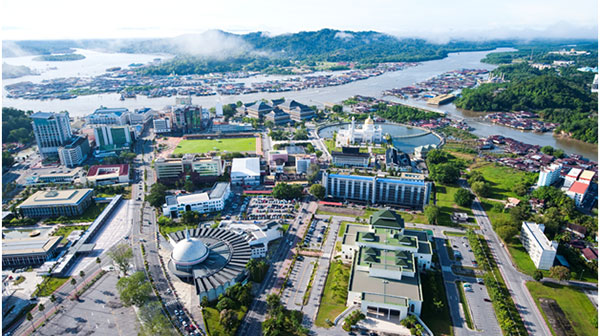
Bandar Seri Begawan, Brunei Darussalam: Vibrant, yet peaceful. Both modern and timeless. A fusion of majestic opulence and traditional respect. Bandar Seri Begawan is the centre of Brunei’s commerce, finance and government. In many ways, it is also the heart of Brunei’s cultural landscape, housing some of the nation’s most revered landmarks. The city’s breathtaking Sultan Omar Ali Saifuddien Mosque is a stunning tribute to the nation’s deep-rooted faith. The majestic mosque that bears the Sultan’s name, the Legislative Council Chamber (Lapau), Taman Haji Sir Muda Omar ‘Ali Saifuddien, and various educational institutions and colleges in the area, stand in testament to the 28th Sultan’s reign. In 1970, two years after Sultan Haji Omar ‘Ali Saifuddien III abdicated and took the title Paduka Seri Begawan, Brunei Town (or Pekan Brunei) was renamed Bandar Seri Begawan by the 29th Sultan, His Majesty Sultan Hassanal Bolkiah. Kampong Ayer or the water village offers a glimpse of the nation’s quaint Asian charm. Beneath Bandar Seri Begawan’s lavish adornments, gold towers, sparkling fountains and colourful mosaic tiles, lies a city steeped in quiet respect, grounded in Islamic tradition, and exuding a sense of peace that makes it one of Asia’s most distinctive capital cities. Sources: Brunei Tourism, Brunei Times, Brunei Resources.
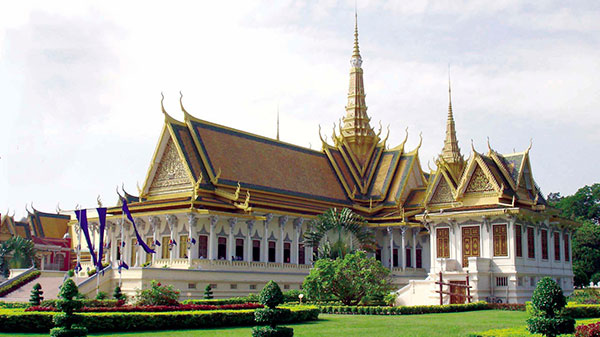
Phnom Penh, Cambodia: The oldest structure in the Cambodian capital is Wat Phnom, which dates from the founding days of the city in the late 14th century. Phnom Penh was the royal capital for 73 years, from 1432 to 1505, and then again in 1866 when King Norodom I made the city the permanent seat of government. Phnom Penh’s main tourist attractions today include Norodom I’s Royal Palace with the Silver Pagoda (pictured above) and the National Museum, which were both constructed in a classical Khmer style during the French colonial era. The French took over a riverside village in 1870 and left behind colonial villas, French churches, boulevards, the Art Deco Phsar Thom Thmei market, and the Hotel Le Royal until they were ousted by the Japanese in World War II. In the 1920s, Phnom Penh was known as “the Pearl of Asia”.

Jakarta, Indonesia: In 1526 the Sultanate of Demak invaded the port of Sunda Kelapa and renamed it Jayakarta. In 1619 the Vereenigde Oost-Indische Compagnie (Dutch East India Company) destroyed Jayakarta and built a better fortified town named after a Roman-era Dutch tribe. Batavia became an important centre of trade and commerce in Asia. Renamed Jakarta during Japanese occupation in World War II, today’s Kota Tua Jakarta or Oud Batavia or Old Jakarta should be visited for its historically important zones such as the Port of Sunda Kelapa, Pasar Ikan (Fish Market), and Chinatown, as well as its many heritage buildings, including the Luar Batang Mosque, Menara Syahbandar (Port Tower), Fine Art and Ceramic Museum (former Court of Justice), and the Jakarta History Museum (former City Hall; pictured above).
Vientiane, Lao PDR: Most historians believe Vientiane started life as an early Khmer settlement centred on a Hindu temple, which the Buddhist Pha That Luang would later replace. In 1354, when Fa Ngum founded the kingdom of Lan Xang, Vientiane became an important administrative city. In the intervening centuries until the French colonialists arrived in 1893 and made Vientiane the capital of their Laos protectorate in 1899, the city had been knocked about in regional conflicts and was in great disrepair. The French rebuilt the city along wide leafy boulevards and helped restore important Buddhist temples such as Pha That Luang, Haw Phra Kaew, and Wat Si Muang, which are the architectural and heritage highlights of the city. The Arc de Triomphe in Paris inspired the Patuxai memorial monument, which was built in honour of those who fought in the struggle for independence from France.
Kuala Lumpur, Malaysia: Situated at the confluence of the Gombak and Klang rivers, Kuala Lumpur (“muddy confluence” in English) was founded in 1857 by Raja Abdullah, a member of the Selangor royal family. KL started life as a trading post for the tin mining industry. Civil war and fire levelled the town in its early years. In 1881, after a devastating fire the British-appointed Chinese headman, Kapitan Yap Ah Loy, rebuilt KL in brick to replace the attap of earlier iterations. After Yap’s passing, Sir Frank Swettenham saw that KL continued to prosper. When the Federated Malay States were incorporated in 1896, KL was made the capital. The streets in the older parts of town are narrow and winding and the architecture is a unique hybrid of European and Chinese forms. Arguably the most important historic building is the Moorish-inspired Bangunan Sultan Abdul Samad built between 1894 and 1897, which continues to house important government departments. It overlooks Merdeka Square, where at midnight on August 31, 1957 the Malaysian flag was hoisted for the first time.
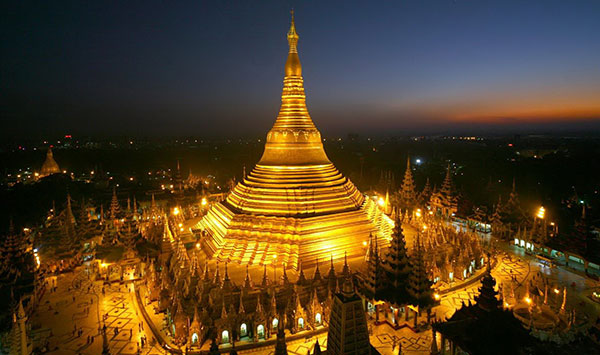
Yangon, Myanmar: Myanmar’s new capital Nay Pyi Taw (since March 2006) is being constructed on green field land some 320 km north of its former capital, Yangon. British colonial Yangon (known as Rangoon by the Brits), with its spacious parks, lakes, and mix of modern and traditional buildings, was known as “the garden city of the East.” According to some commentators, Yangon’s public services and infrastructure were on par with London’s by the early 20th century. Today, downtown Yangon is known for its leafy avenues and late 19th/early 20th century architecture. The former High Court, the former Secretariat buildings, a former high school, and the Strand Hotel are excellent examples. Yangon has the highest number of colonial-period buildings in Southeast Asia. They are likely to be protected from Myanmar’s new found economic growth. In 2012, Yangon imposed a 50-year moratorium on demolition of buildings older than 50 years. The Shwedagon Pagoda, one of the wonders of the world, the prominent landmark visible from miles around is believed to have been built more than 2,600 years ago. Bogyoke Aung San Market is one of the best places for souvenir shopping. Myanmar handicrafts, jewellery, lacquerware, and modern items are readily available.
Manila, Philippines: Within the eclectic diversity of Manila is a walled medieval city called Intramuros (“within the walls”). Established by Spanish settlers in 1571 to replace the mercantile settlement of Maynila, Intramuros served as the seat of government during the Spanish colonial period. Intramuros was changed by the subsequent American colonial period, and then deeply scarred by World War II. Since 1979, however, the Intramuros Administration has been restoring the walls and parts of the city they contain. Fort Santiago, which guarded the mouth of the Pasig River, remains the primary landmark and tourist attraction of the old quarter today. The final resting place of the first Governor General of the Philippines, Miguel Lopez de Legaspi, at San Augustin Church and museum is a good place to learn about Catholicism’s influence. Across the street is the Casa Manila, a restored building furnished in the style of a typical high-society home of the 19th Century. Like the city itself, it is a unique mix of east and west. Source: SoutheastAsia.org.

Singapore: Modern Singapore was founded in the early 19th century when Britain’s Sir Thomas Stamford Raffles recognized the strategic potential of the Lion City. He landed on 29 January 1819 and negotiated a treaty with the local rulers establishing Singapore as a trading station. The island’s free trade policy attracted merchants from all over Asia and the world. The thriving city’s population exploded from 150 in 1819 to 80,792 in 1860; comprising mainly Chinese, Indians and Malays, a combination that remains dominant to this day. British colonialism and the three predominant Asian cultures in Singapore have all left their mark on the city in terms of individual landmarks and districts. However, the shop houses, churches, and temples of Chinatown offer arguably the greatest visual contrast between old and new by virtue of their location right at the feet of Shenton Way’s sparkling skyscrapers (pictured above). Source: YourSingapore.com.
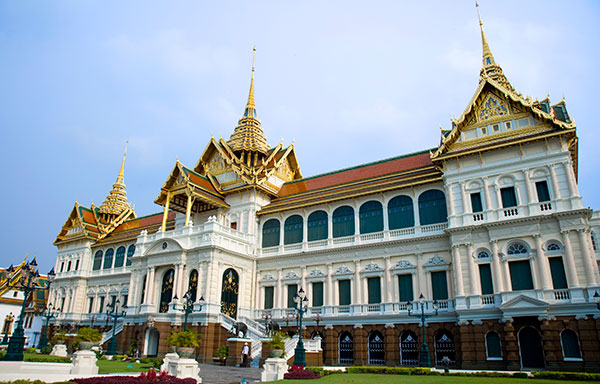
Bangkok, Thailand: Bangkok’s most important historical attractions can be found on an island. Rattanakosin is an island by virtue of the fact that it is bordered on the west by the Chao Phraya River and on the east by khlong (canals) dug to serve as defensive moats for the old capital. Rattanakosin’s essential sights include the majestic Grand Palace (pictured above), the beautiful Wat Phra Kaeo, home of the Emerald Buddha, as well as the spiritually significant Wat Pho and Wat Maha That. Due to its elite universities and the backpacker haven of Khao San Road, Rattanakosin also offers vibrant markets and a trendy and youthful nightlife. Just across the river is Thon Buri, which served as King Taksin’s temporary capital from 1767 to 1782. In addition to its staple sights Wat Arun and the Royal Barge Museum there is still a working khlong network on the Thon Buri side that you can explore by long-tail boat and see why Bangkok was once called “the Venice of the East”. Source: Bangkok Maps.

Hanoi, Viet Nam: Getting lost in the Old Quarter is one of the joys of Hanoi. A maze of 36 streets, each named for an important commodity or product, spreads like gnarly branches from the northern bank of Hoan Kiem Lake. Hanoi has prosperously grown around these streets since the beginning of the 15th century, yet the area remains commercially significant with artisans and merchants plying their trade in poky street shops, Dong Xuan market, and the vibrant night market in the heart of the Quarter. Important landmarks include the site of the oldest university in Vietnam, the Temple of Literature (V?n Mi?u-Qu?c T? Giám), One Pillar Pagoda (Chùa M?t C?t), and the Flag Tower of Hanoi (C?t c? Hà N?i). In 2003, a large part of the 1,000 year-old Imperial Citadel of Thang Long-Hanoi was discovered nearby and has been recognized as a world cultural heritage site by UNESCO since 2010. The Old Quarter maintains its old-world charm while allowing trendy restaurants, clubs, and bars to add flashes of modernity after dark. And it has always been a great place to go for authentic Vietnamese food.
Sources: In addition to the sources mentioned for each city, the author was assisted by Wikipedia.



